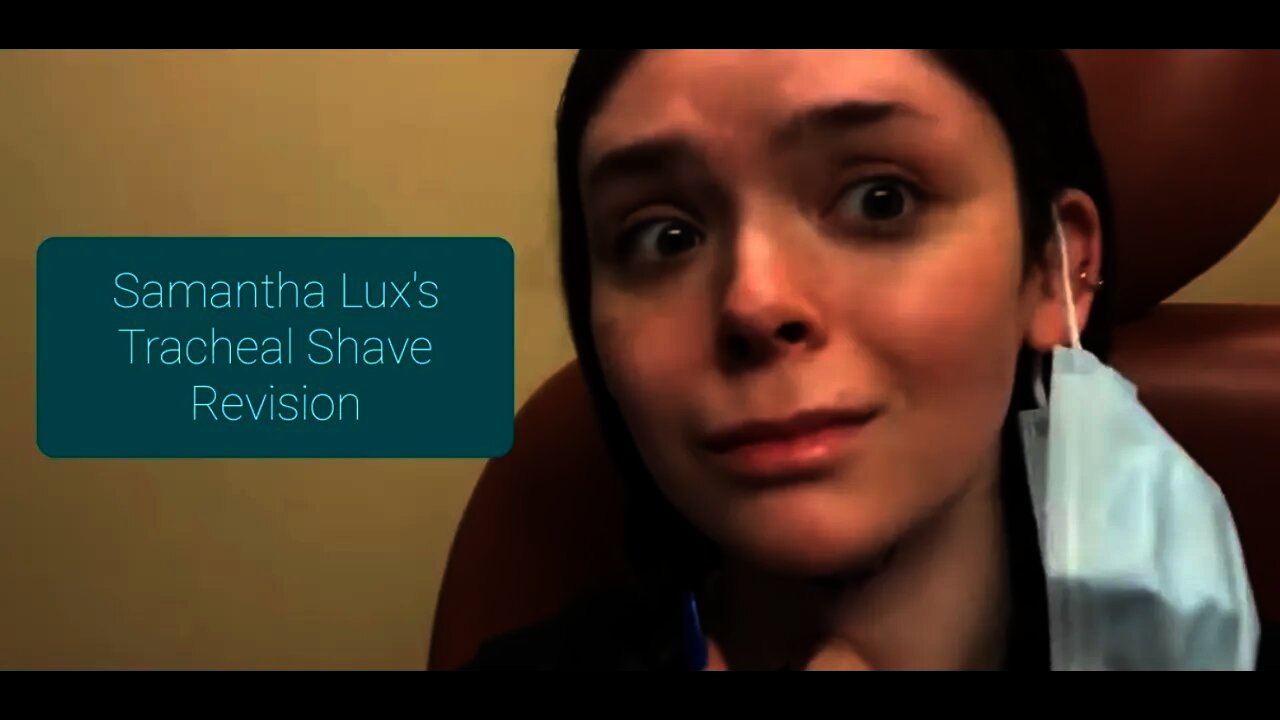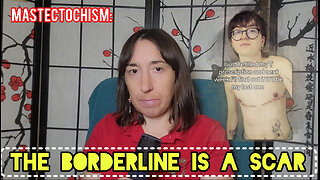Premium Only Content

Cartilage Blanche
Samantha, this is viral marketing. This hypothetical model could help someone - perhaps you. It will likely significantly financially benefit me if you blow this up. So if you are unhappy with this video, you may prefer not to even acknowledge it.
(Superiority Complex Part 2)
Patreon.com/Exulansic
Paypal.me/Exulansic
exulansic.sellfy.store
Chondrotracheoplasty, aka, chondrolaryngoplasty, or as is known colloquially, "tracheal shave," is a cosmetic surgery procedure in which a person has had carved off parts of the tracheal cartilages (especially thyroid cartilage or "Adam's apple") to reduce the masculinized look of the front of the neck, in an attempt to create a more feminine appearance by masking the true size of the larynx and trachea. Because it is impossible to physically shrink the larynx once it has reached its mature adult size, shape, and tensility, the cartilage must instead be thinned. This creates risk to surrounding tissues, including very small nerves that run along the outside of the cartilage being "shaved."
The larynx is an complex, intricate, nickel-sized structure (in an average adult male, versus dime-sized female) that is full of blood vessels, nerve endings, small, mobile cartilages, muscles, and other connective tissue. It is one which is highly specialized for extremely fine, rapid, regular movements, including dynamic stabilizing activation patterns. The function of the larynx is critically important to the biological function of swallowing, which is performed 500-700 times per day. A small adhesion quickly snowballs.
In this episode, transgender youtuber Samantha Lux describes post-tracheal shave complications, including suspected tracheodermal skin adhesion, and I speculate on causes, including damage during the surgery or as a result of the scar tissue, to the external superior laryngeal branch of the vagus nerve, and offer informed speculation and terminology to help contextualize the symptom pattern described, as it would apply to a HYPOTHETICAL patient. This is PART 2 where I examine her video documenting the efficacy of the second surgery that was intended to free the adhesion and restore mobility to Samantha's larynx.
Samantha Lux is not my patient and we have no clinician-client relationship and never have. Where I appear to be addressing Samantha directly, I am in fact rhetorically addressing a hypothetical male patient named Sam. I am not in a position to formally diagnose Samantha, though I am qualified to diagnose these disorders generally, at the time of publication. None of this is Samantha's additional personal, private information - just speculation and extrapolation based on Samantha's self-published information (fair use exception to copyright). I also offer suggestions and advice for which type of follow up care would be most appropriate for a hypothetical patient presenting with an identical history and sign/symptom pattern.
-
 18:41
18:41
TT Exulansic
23 days agoMastectochism: The Borderline is a Scar
2.09K9 -
 30:31
30:31
SB Mowing
20 hours agoI brought in REINFORCEMENTS when I saw the state of this yard
60.1K24 -
 1:59:13
1:59:13
Adam Carolla
2 days agoBeing Republican & in Hollywood +Kelsey Grammer on Fatherhood + Peter Berg's Super Bowl Commercials
35K21 -
 18:29
18:29
DeVory Darkins
9 hours ago $22.68 earnedZelenskyy KICKED OUT of the White House after shouting match erupts
60.4K142 -
 2:23:02
2:23:02
Badlands Media
22 hours agoThe Liberty Den Ep. 133
87.9K33 -
 2:05:41
2:05:41
TimcastIRL
9 hours agoTrump SLAMS Ukraine President In TENSE WH Meeting, The War MAY END w/ Rob Smith | Timcast IRL
172K93 -
 10:31:05
10:31:05
Dr Disrespect
17 hours ago🔴LIVE - DR DISRESPECT - PGA TOUR 2K25 LAUNCH DAY
197K28 -
 2:30:04
2:30:04
Laura Loomer
8 hours agoEP105: MISSING: The Epstein Files
77.2K55 -
 1:46:14
1:46:14
Kim Iversen
9 hours agoTrump to Zelenskyy: 'You're Gambling with World War III'
86.3K131 -
 55:28
55:28
Glenn Greenwald
11 hours agoGlenn Reacts to Trump-Zelensky Exchange and Takes Q&A from our Members | SYSTEM UPDATE #415
134K231